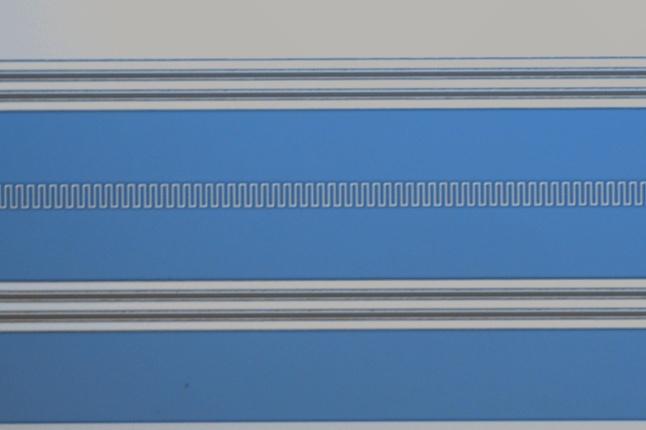News
The Advanced Photon Source (APS) Users Organization has named Rafael Jaramillo as the recipient of the 2010 Rosalind Franklin Young Investigator Award. Jaramillo is recognized for furthering understanding of itinerant magnetism and for contributions to the study of quantum matter at high pressure using synchrotron x-ray diffraction.
The award recognizes an important technical or scientific accomplishment by a young investigator that depended on, or is beneficial to, the APS.
Jaramillo will receive the award on May 4 at the 2010 Users Week meeting at the U.S. Department of Energy's Argonne National Laboratory, where he will also present his work.
Jaramillo received his B.S. in applied physics from Cornell University and a Ph.D. in physics from The University of Chicago, where he was a member of Thomas Rosenbaum’s research group. The work recognized in this award resulted from an extensive collaboration between Jaramillo and Yejun Feng, who is now a member of the APS Magnetic Materials Group in the Argonne X-ray Science Division (XSD). Jaramillo is currently a Ziff Environmental Fellow at the Harvard University Center for the Environment and the Harvard School of Engineering and Applied Sciences, where he is developing advanced materials for solar energy conversion.
Jaramillo’s work has focused on itinerant magnetism, an ephemeral form of magnetism that arises from interactions among conduction electrons in a metal, and specifically on the question of how magnetism emerges from disorder. Previous work had hinted that it would be possible to completely suppress the magnetism in chromium metal by applying very high pressures at temperatures near absolute zero. The result would be a phase transition between magnetism and disorder. However, unlike well-understood phase transitions that are driven by thermal energy (for example, ice melting into water), this phase transition would be governed by quantum mechanical agitation of the conduction electrons. If accessible, this transition would be a prime example of quantum criticality.
Getting to the quantum critical point, however, was a daunting challenge. The phase transition would be signaled by subtle changes in the x-ray diffraction pattern as the electron spins changed from ordered to disordered—changes so subtle that picking them up would be like trying to hear a pin drop in the middle of a football game. Moreover, these subtle changes would have to be recorded from miniature crystals that were maintained intact while being squeezed at pressures up to 10 GPa (100,000 atmospheres) at temperatures near absolute zero. But Jaramillo and colleagues did just that, and by measuring signals more than one billion times weaker than the standard diffraction pattern they were able to show that chromium does undergo a quantum phase transition at high pressure and low temperature. Of even greater interest to physicists, there appears to be no limit on how closely such an experiment can approach the quantum phase transition. Chromium therefore provides a unique example of a "naked quantum singularity." The report of quantum criticality in chromium appeared in the May 21, 2009, issue of Nature (459, 405, 2009). An overview of the phenomena involved is given in an Argonne research highlight that coincided with the publication of the Nature paper (May 21, 2009).
The award recognizes Jaramillo’s achievement in integrating three techniques to achieve the required sensitivity: low-temperature studies, high-pressure diamond anvil cells, and high-resolution diffraction at XSD beamline 4-ID-D at the APS. After several years spent wrangling these techniques together, the team was able to resolve both charge density waves and spin density waves (nine orders of magnitude weaker than the Bragg peak) at extreme pressures and low temperatures. This work created a new toolbox for measuring condensed matter systems by bringing high-pressure techniques to a level of precision comparable to long-established techniques such as applied magnetic fields and variable temperature. As a result, a new set of questions have become open to study, and the technique they developed is now being applied at the APS to other condensed matter systems.
To achieve this remarkable sensitivity, “We evolved a series of technical approaches that relied on the state-of-the-art diffractometer at APS Sector 4, the low-temperature experience in our group, and high-pressure experience at the APS,” Jaramillo said. “We were starting from a good base of expertise on diffraction at high pressure at the APS, and we were really grateful for the advice we got from around the experiment hall. We did a lot of little things, such as when we wanted to get from 8K to 5K. Each one doesn’t sound like much, but at the end of the day we had a new technique.”
After years of “sustained meticulousness” and a lot of sleepless nights, Jaramillo is especially gratified that the technique has proved more broadly useful; several users at Sector 4 are already working to apply these methods to their systems.
“We were chasing the quantum phase transition in chromium, but it’s really nice to see there were other things waiting to be cracked,” Jaramillo said. The work also gratified his own impulse to understand the relationship between order and disorder. “That’s the motivating interest behind most of condensed matter physics, and this project answered it in a very satisfying way.”
This press release was adapted from Advanced Photon Source, a U.S Department of Energy, Office of Science of Basic Energy Sciences national synchrotron x-ray research facility. Read the original release.
Topics: Applied Physics
Cutting-edge science delivered direct to your inbox.
Join the Harvard SEAS mailing list.



